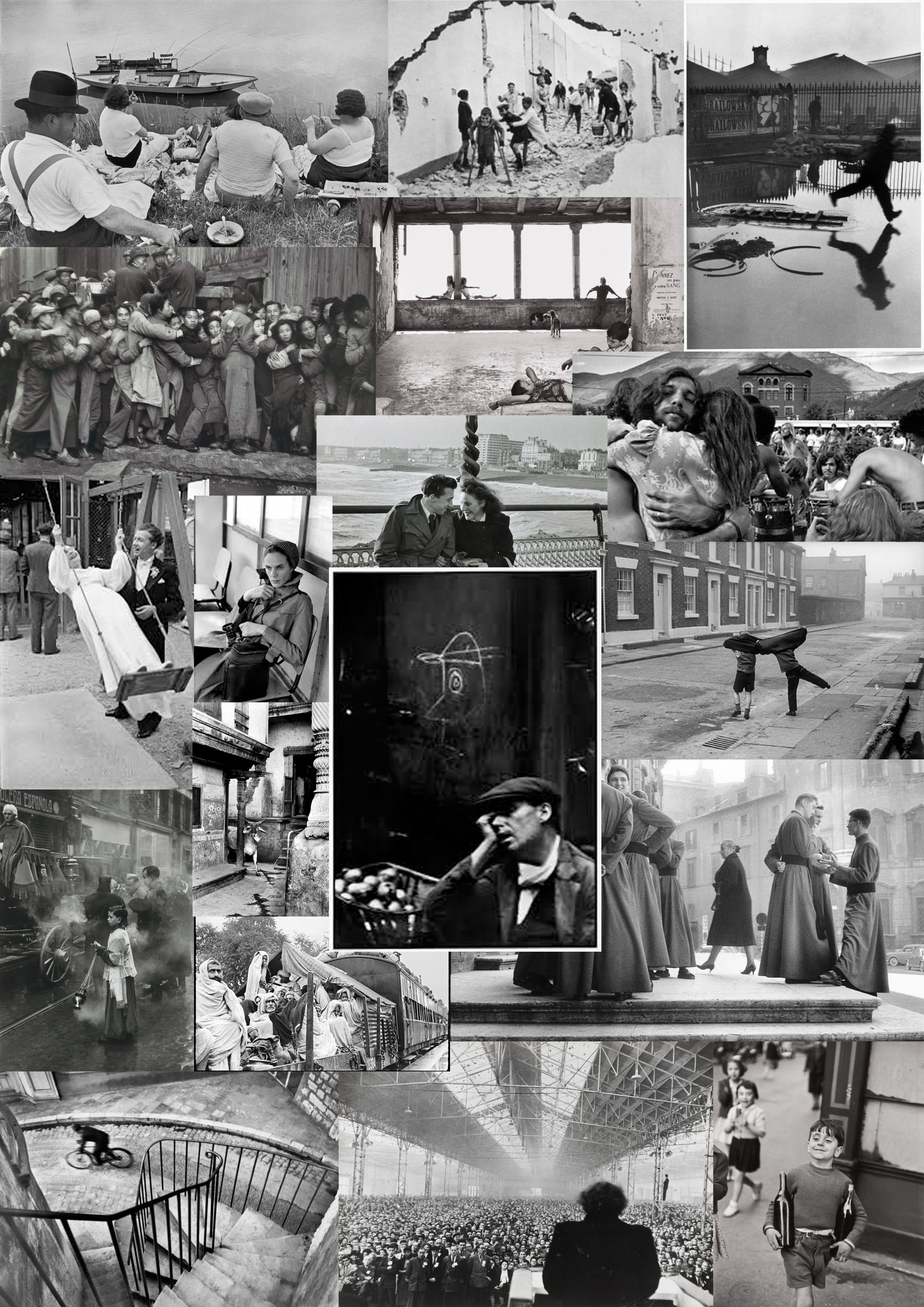He was a French humanist photographer who worked within street photography and it well known for his ‘decisive moment’ technique.
 Decisive Moment-In 1952 Henri Cartier-Bresson, a founder of modern photojournalism, proposed one of the most fascinating and highly debated concepts in the history of photography: “the decisive moment.” This moment occurs when the visual and psychological elements of people in a real life scene spontaneously and briefly come together in perfect resonance to express the essence of that situation. Some people believe that the unique purpose of photography, as compared to other visual arts, is to capture this fleeting, quintessential, and holistic instant in the flow of life. For this reason, many photographers often mention the decisive moment, or similar ideas about capturing the essence of a transitory moment, when they describe their work.
Decisive Moment-In 1952 Henri Cartier-Bresson, a founder of modern photojournalism, proposed one of the most fascinating and highly debated concepts in the history of photography: “the decisive moment.” This moment occurs when the visual and psychological elements of people in a real life scene spontaneously and briefly come together in perfect resonance to express the essence of that situation. Some people believe that the unique purpose of photography, as compared to other visual arts, is to capture this fleeting, quintessential, and holistic instant in the flow of life. For this reason, many photographers often mention the decisive moment, or similar ideas about capturing the essence of a transitory moment, when they describe their work.
Behind the Gare St. Lazare 1932

Technical
This photo was purely natural lighting, no flash, it appears to me it was bright day due to the definite shadows. The contrast is prominent between the light and dark areas created by the black and white filter. Due to Henri’s use of the decisive moment approach he doesn’t appear to have huge amounts of control over the positioning of the the people in this shoot and what they are doing. On the other hand he could control the lens which was 35 mm, also he positioned himself in a way in which the mans reflection was captured. He had a relatively slow shutter speed as the man appears to be slightly blurry as hes running, but at the same time it’s not too low as the ripples in the puddles are clear. The colour cast is dark, creating a cold tone to the photo. In some areas its slightly over exposed but the black and white makes its hardly noticeable. The focal point for me is the man running as Henri only took this photo at that decisive moment in which the man was running otherwise it would be bare. The blurriness of the mans silhouette works well in contrast with the sharp detailed surrounding.
Visual
The texture in this photo varies throughout, for instance the water ripples, the pile of rubble, the wall plastered in photos and the metal railing. Although there are many different textures in this one image they work well, there doesn’t appear to be any tensions between them, as well as the background and foreground there is harmony between them and they merge into one another effectively. There is a clear black and white filter on this photo, as well as that there is a rule of thirds which creates an element of structure and timing to the photo. I wouldn’t say there is a leading eye but the first thing that attracts me to this image is the blurred mans so there is an area of interest in the photo.
Contextual
The Gare Saint-Lazare (St Lazarus Station), officially Paris-Saint-Lazare, is one of the six large terminus railway stations of Paris. It is the second busiest station in Paris, after the Gare du Nord. It handles 275,000 passengers each day. The station was designed by architect Juste Lisch, and the maître de l’oeuvre (general contractor) was Eugene Flachat.
